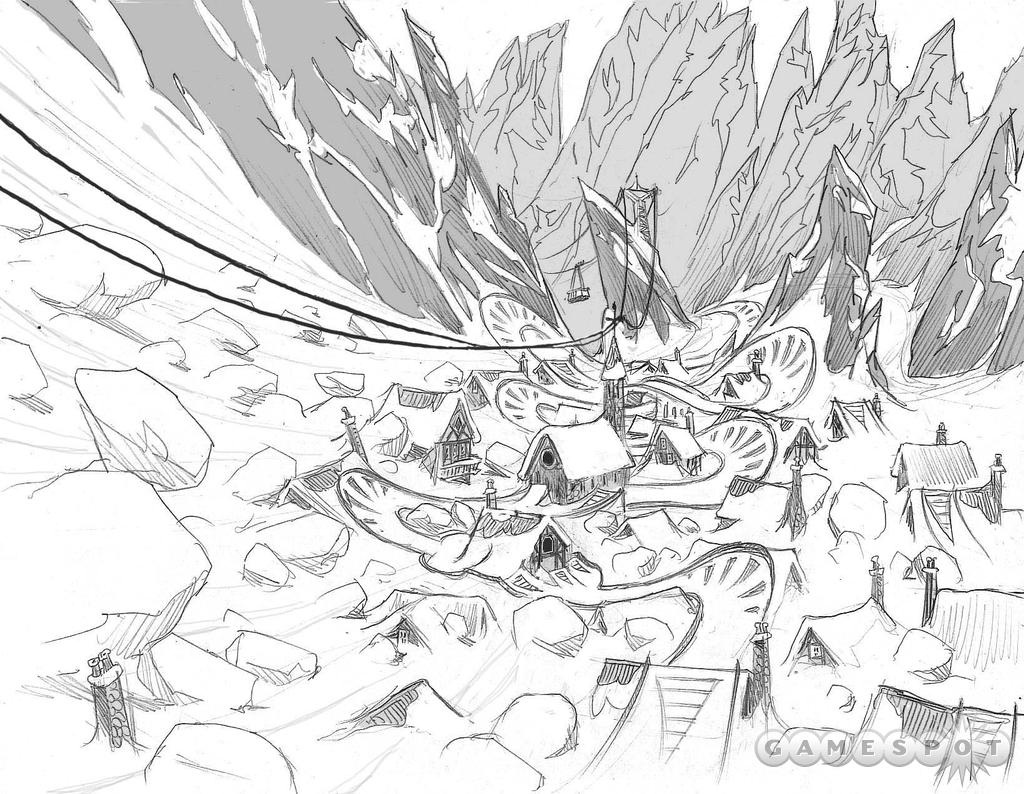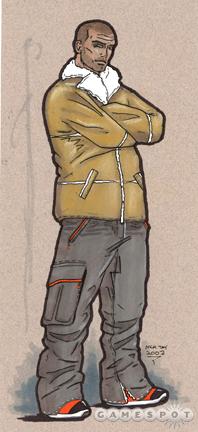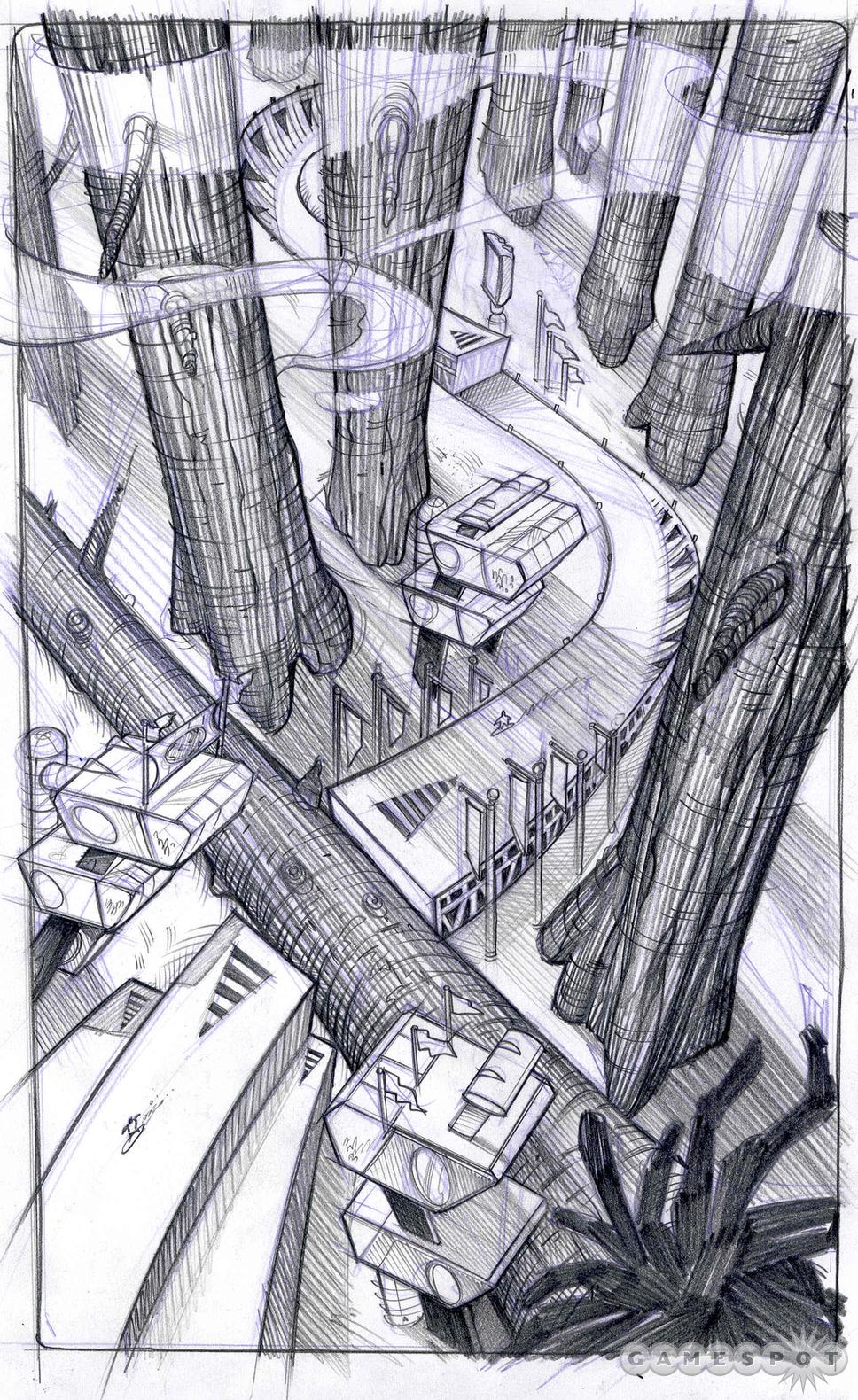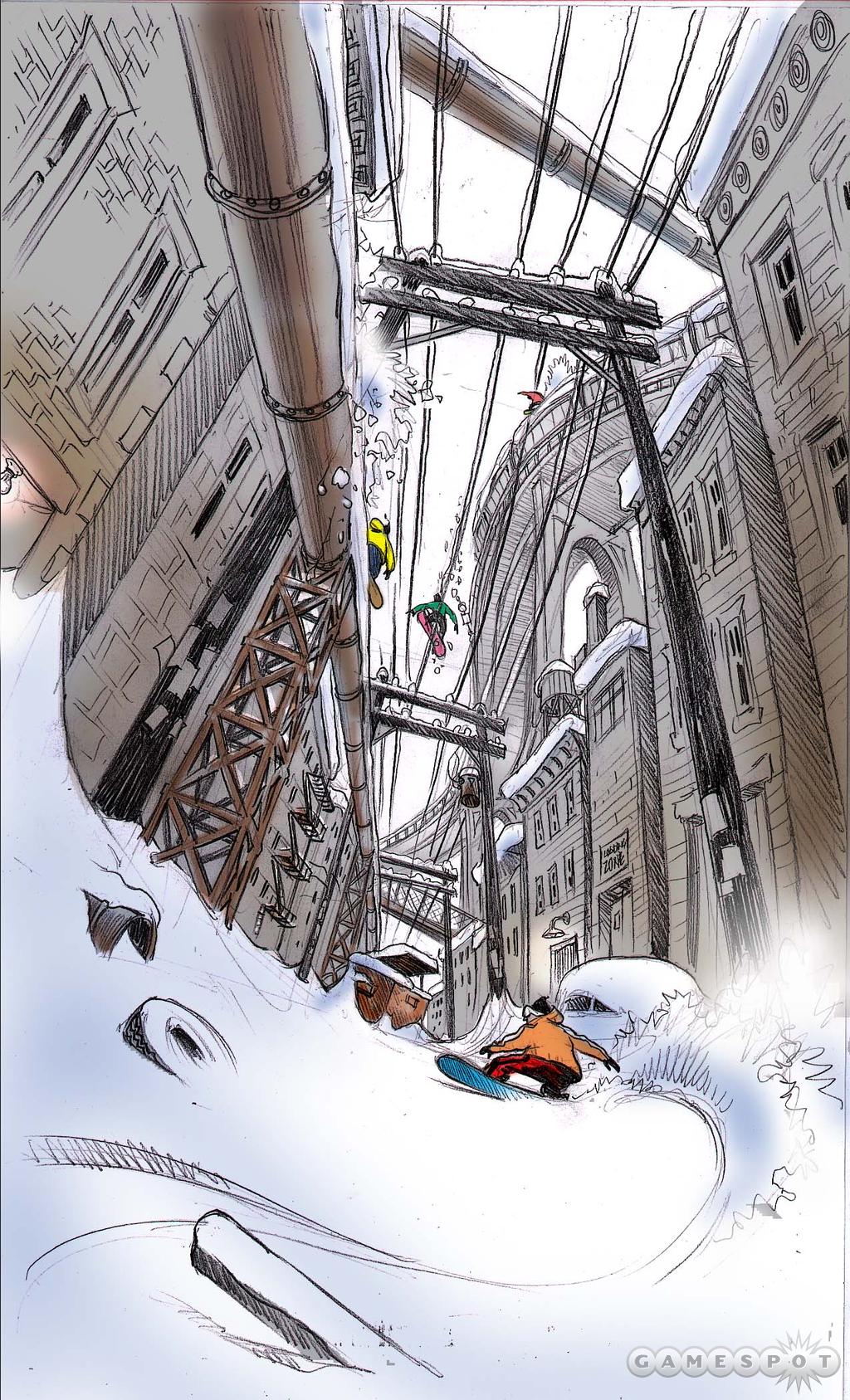SSX 3 Postmortem
We talk to coproducer Dave Elton about the latest entry in the SSX series.
SSX 3's recent multiplatform release took Electronic Arts' snowboarding franchise into some unique new territory with its refined gameplay and impressive visual aesthetics. In the wake of its warm critical and commercial reception, we checked in with Dave Elton, the game's coproducer at EA Canada, to see how the team felt about the game.
GameSpot: SSX 3's development drew together people with disparate backgrounds that weren't necessarily confined to games. Why do that, and what did it bring to the project?

Dave Elton: The skill set required for making games (particularly games the size and quality of SSX 3) is rapidly becoming more specialized. It wasn't that long ago that someone with a varied "jack-of-all-trades" skill set would be able to work at the quality level necessary to create the elements of the game. Now, as expectations grow for what video games can offer, we are looking to other mass-market entertainment mediums to draw upon their experiences. By drawing on people who have experience working at high-quality levels in their various mediums--regardless of their backgrounds--we are able to set higher benchmarks for our games. One example of this experience involves one of our art directors, who is an Oscar-nominated special effects director. He was used to working in a medium where every frame can be examined. He took that attention to detail--and years of experience--and helped us get our worlds to a level of detail that we would have been very hard-pressed to achieve, based on our on experience.
GS: Now that the game has shipped, how close did it end up coming to what you set out to do?
DE: Most of the major things that we originally set out to do in SSX 3 made it into the final version. There were some items that we were not able to push as far as we had we originally planned, but many things evolved considerably as we got deeper in the process.
One example of how things developed is how the levels were connected, at different times, in the course of development. We started with all of the levels connected in the original design, but then actually went back to a layout where each course was a separate entity, like we had in Tricky and the original SSX. The depth of the game actually increased as it made its way to completion. As we got a chance to actually play the game, instead of just looking at the game from a theoretical view, we found new ways to structure our gameplay and found that some of the assumptions we made at the beginning did not pan out to be the experience we were hoping for. In these cases, we added content, restructured the existing content, or removed the item completely.
GS: How did you go about deciding on the game's roster?

DE: For SSX Tricky, we looked at creating a roster with a "slice of life" approach by looking at all types of people--from the wild and crazy to the sweet and demure. For SSX 3, we took a different approach where we looked at a slice of people inside snowboarding. In looking at who we wanted to keep in the main roster for SSX 3, it was a combination of who we felt were the strongest characters and who would work well in an ensemble cast. There may have been one or two favorite Tricky characters that were not included in the main roster, but they were left out because they did not fit inside the ensemble. All of the returning characters went through a maturation process, which is probably most visible when looking at the younger characters.
GS: How did you target which elements of the gameplay were going to be tweaked?
DE: Right from the start we knew that we had a challenge. Looking at how sequels (particularly third instalments) typically perform, we knew that if we did not offer a substantial improvement over SSX Tricky, we would probably not be as successful as we wanted.
We examined what we liked and didn't like about SSX Tricky but also looked to see what the consumers thought we did right and wrong. There were core elements of the SSX games that we knew we could not mess with or else we would be changing what made an SSX game what it is. Tight controls, fluid animation, race and trick elements, and arcade sensibilities are all elements that are key to the SSX experience. In looking at what we wanted to change, we applied a rule of thirds where we kept one-third the same, improved one-third, and added one-third all-new material. The third that needed to stay the same was the core of the SSX game. We wanted to improve the tricks and exploration elements of the game.
GS: How satisfied were you with the new structures you implemented?
DE: Overall, we were happy with how the mountain came together and how the rider is able to explore and ride to where he or she wants. We were also happy with the execution of the ride from the top of the mountain to the bottom. The major thing we learned from implementing this type of structure is that we needed to give the players as much information as possible about where they were.

In some of our initial tests, we found that when players were dropped right on to the mountain--without some clues as to where to go and what to do--they were confused about their objectives and what they should do. In the final version of the game, we moved the player to a drop-off point that was closer to the first base station, and we populated all of the transition areas with "road" signs that let players know where they were headed and how far they had to go. In the end, we weren't quite as successful as we wanted to be in implementing a structure that felt completely open, yet allowed players to know exactly where they were at any given point. But we came close.
In fine-tuning the game's progression, we built upon our learnings from SSX and Tricky, where we found that approximately half the people played the game as a racing game and half played it as a trick game. SSX and Tricky allowed the player to open up the game by following either path--with only a couple of elements available to the player who did both. When we expanded the gameplay for SSX 3, we made sure that this type of structure continued. Players can open up the whole mountain by completing one of four paths: racing, freestyle (trick-based experience), exploration (finding collectibles and completing challenges), and, finally, collecting cash (completing a number of goals in the game, while not necessarily completing any of them completely). We wanted players to be able to play how they wanted to play.
GS: What did you learn about the various platforms after bringing the game to them?
DE: From a technology point of view, I think the best thing that we did was conduct concurrent development on each of the platforms. There were elements of the game that were prototyped on one of the platforms, and then we moved them to the other two. All of the platforms have their own strengths and weaknesses. What we tried to do was work toward the strengths of each of the platforms, and then we tried to see if we could replicate the success on the other platforms. It was a challenging exercise, but, in the end, it was very successful.
GS: As good as the game turned out, what didn't end up making the cut and why?
DE: There were a few things that we had originally designed into the game, including a couple of modes that didn't make it. In some cases, they were things that did not work with the core of what we wanted SSX 3 to be, and, in other cases, they were things we simply did not have time to implement. I think some of the items may make it into future versions of SSX--if we continue the franchise--so I won't go into detail here. I want to keep some surprises for the future.
GS: Have there been any surprises in people's reactions to the game?

DE: The only thing that I think has surprised us a bit was that some people still consider SSX 3 a racing game, though we were mostly focused on increasing the trick experience and really broadening the exploration aspect of the game, while still providing a great race experience. We tend to see the game as a snowboarding experience rather than just a racing game or just a trick-based game. The overall reaction to the game has been absolutely phenomenal, which, I guess, is a bit of a pleasant surprise. When you have been working with something for two years, it can be difficult to step back from the game to objectively look at it.
GS: What did you learn from the experience?
DE: The area where we learned the most was in making an open environment experience--and the challenges that go along with that type of world and trying to keep the player inside of that world. Players have had a long history, inside gaming, of following a pattern of "pick from front-end menu, finish course, go to the front-end menu, and repeat." Trying to allow the player to apply this same type of choice mechanism, inside of a world environment, has a number of challenges.
GS: Any thoughts on where to take the next one as a result of this new knowledge?
DE: If we do take on the next SSX title, you probably will see more open worlds. We would definitely take what we learned and build upon that foundation. And, of course, we'll add at least one-third completely new concepts.
GS: Thanks for your time.
Got a news tip or want to contact us directly? Email news@gamespot.com
Join the conversation